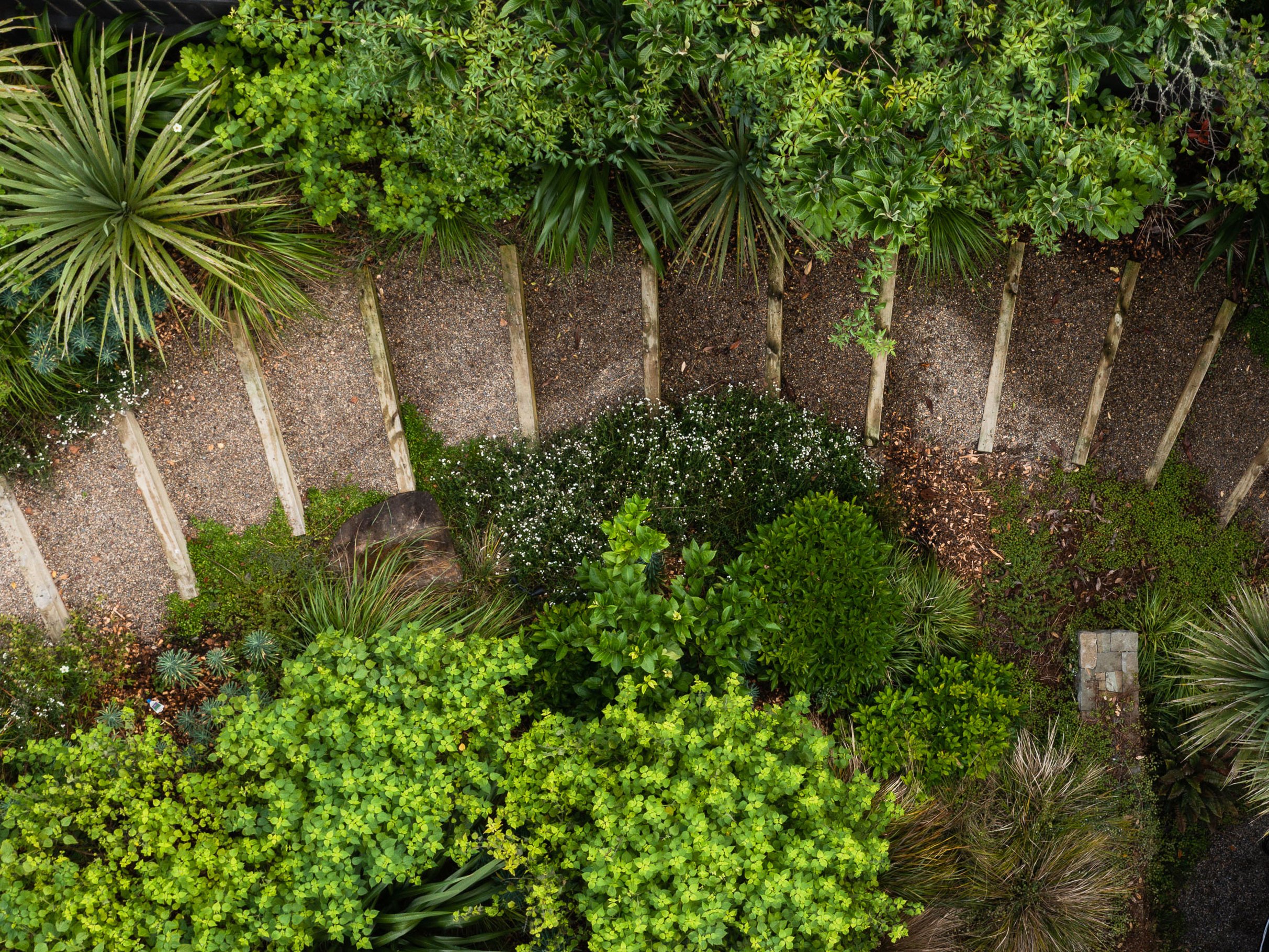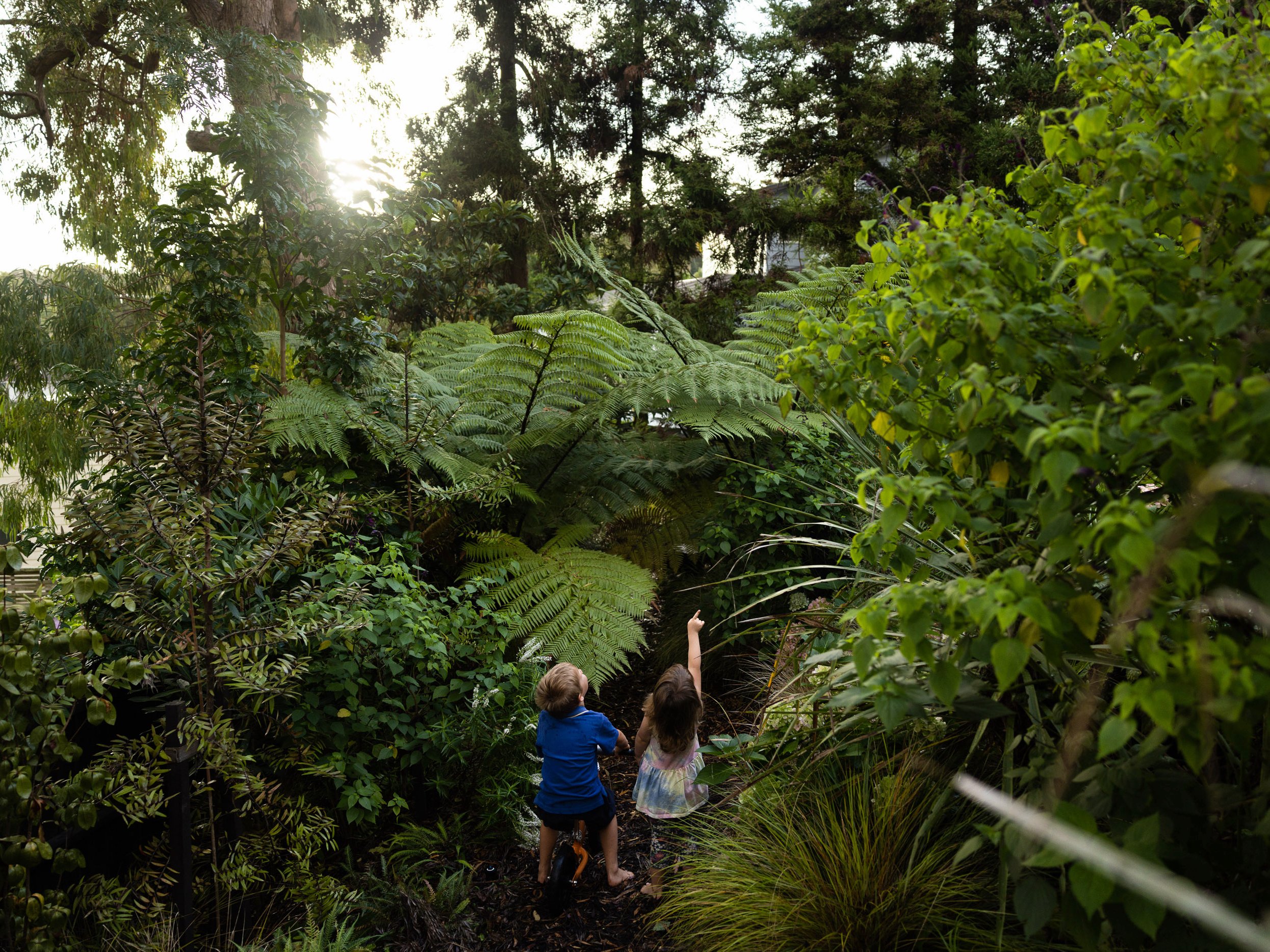2022 NZILA Firth Conference: Climate reflections
By Richard Neville
“My funky concrete seat walls are cooking the planet.” I love this. They are not my words, they are the words of Martin O’Dea. Words that came from last month’s 2022 NZILA Firth Conference. I love this, because these words drive a stake deep into the heart of the habitual norms of landscape architecture. And I too, am guilty.
What are we doing if our designs as landscape architects, as designers, are cooking the planet? What is the cost, the real cost, the environmental cost of our line on the page?
We are in a climate emergency. We know this, we talk about this, but do we act like this?
Richard Neville of Neville Design Studio.
What would our world look like, if we as designers, started with a canvas full of an eclectic mix of biodiverse plants? And with every hardscape intervention we made, we acknowledged that it represented a missed opportunity for regenerating our planet? Our earth is screaming at us, desperate screams for help, as we blindly walk towards the edge of a precipice.
“The human being has become natures warden and natures executor.” The words of Richard J Weller. Powerful stuff.
It was astounding to me that following Craig Pocock’s presentation on The Carbon Landscape, the discussions became focussed on simply changing the specification of concrete to a lower carbon option. Is this the same as changing the number on a plastic bottle? Instead, what would our world look like if we drastically reduced the concrete that gets poured into our projects? Focussed our efforts on regeneration and revitalisation? It seems sustainability has become an excuse to hold our ground with the status quo. A green washing tool to excuse ourselves from change.
Recycled concrete steppers meander through the West Harbour School Entrance Garden. Image credit - Neville Design Studio.
Let’s not start with changing the concrete on our drawings to a different spec. Let’s not change our concrete to lawns or gravel. Let’s raise the bar and start with plants.
In the conference, Renee Davies described the need for “humble, sensitive and collaborative” design. And not only collaborative with each other, with mana whenua, but with our environment too. The good news is there is a movement. We are, we can, we will do better.
I was fortunate enough to be in New York City in 2017 and at the time the regeneration of Battery Park was underway. The ecologically dead monoculture lawns were being revitalised with ecologically rich and biodiverse plants. Our recently finished waterfront revitalisation in Tāmaki Makaurau named Te Wānanga is a great example and features a beautifully diverse mix of plants. But can we do more?
In New Zealand, it seems we have an obsession with native plants. Let’s be clear, natives are great, natives local to their site are even better. But we also have an obsession with concrete, with paved surfaces, with small islands of planting, cast out into a sea of concrete.
A slippery grass slope transformed into a ecologically rich garden. Image credit - Neville Design Studio.
Can we design spaces where concrete and lawns are the last option we use? Can we be planting experts rather than paving experts? Like concrete, I would suggest plants are the elephant in the room of landscape architecture. Historically, we haven’t been planting experts and as a result papatūānuku has suffered. It is an unfortunate truth the world of landscape architecture would rather not acknowledge. Acknowledging our flaws, however, is the starting place for change.
Let’s lift the bar and open our arms to our horticultural, planting and garden design friends. Let’s together, design an earth which is in harmony with nature. We are nature. “Diversity is not a characteristic of life, it is a condition necessary for life. Like air and water.” Jason Cotter - Wonderground Journal, Issue 3.
Landscape studio Terremoto call it ‘radical gardens of love and interconnectness.’ Some people reading this may think “come on Richard, this is just a bunch of hippie bullshit.” I invite that conversation. You may even say “what does this guy know, he just designs gardens.” I invite that conversation also.
Previously a site of almost all lawn, now a garden titled ‘Sanctuary at Home’ Image credit - Neville Design Studio.
What if we were all garden designers? What would our public, commercial and private spaces look like if they were gardens? What if for a moment, we forgot about our invisible lines of private or public, one country or the next and instead saw earth’s surface as one continuous membrane? One intrinsically linked garden? While some very urban settings, may require concrete or impermeable surfaces, what would our regions, our cities, our homes look like if plants were the first tool that came out of the toolbox? How would that effect our taha tinana (physical wellbeing), taha hinengaro (mental wellbeing), taha whānau (family wellbeing), and taha wairua (spiritual wellbeing)?
We need to revisit our habitual norms. Something as simple as describing a tree planted in a street as a ‘street tree,’ suggests the tree belongs to the street. What would our street trees look like if we called them earth trees? How might this change the spacing and species selection? How can we use this as a tool for revegetation, regeneration, revitalisation. Let’s build on and move on from sustainability, which seems to be an excuse to stay where we are. To stay in one place. To pretend to be green. Our earth is hurting and it needs us.
Fortunately we have the tools as a profession and we are perfectly positioned for the task at hand. The recent conference reflected on our growing connection and openness to work collectively with mana whenua on projects. It’s fantastic. The knowledge, richness and depth of understanding Māori culture has of our environment is immense. An understanding we should look up to and lean into.
I finish this ramble with one simple question; If you consider changing a concrete specification to a low carbon mix, stop. Ask yourself this - does it need to be concrete at all?



